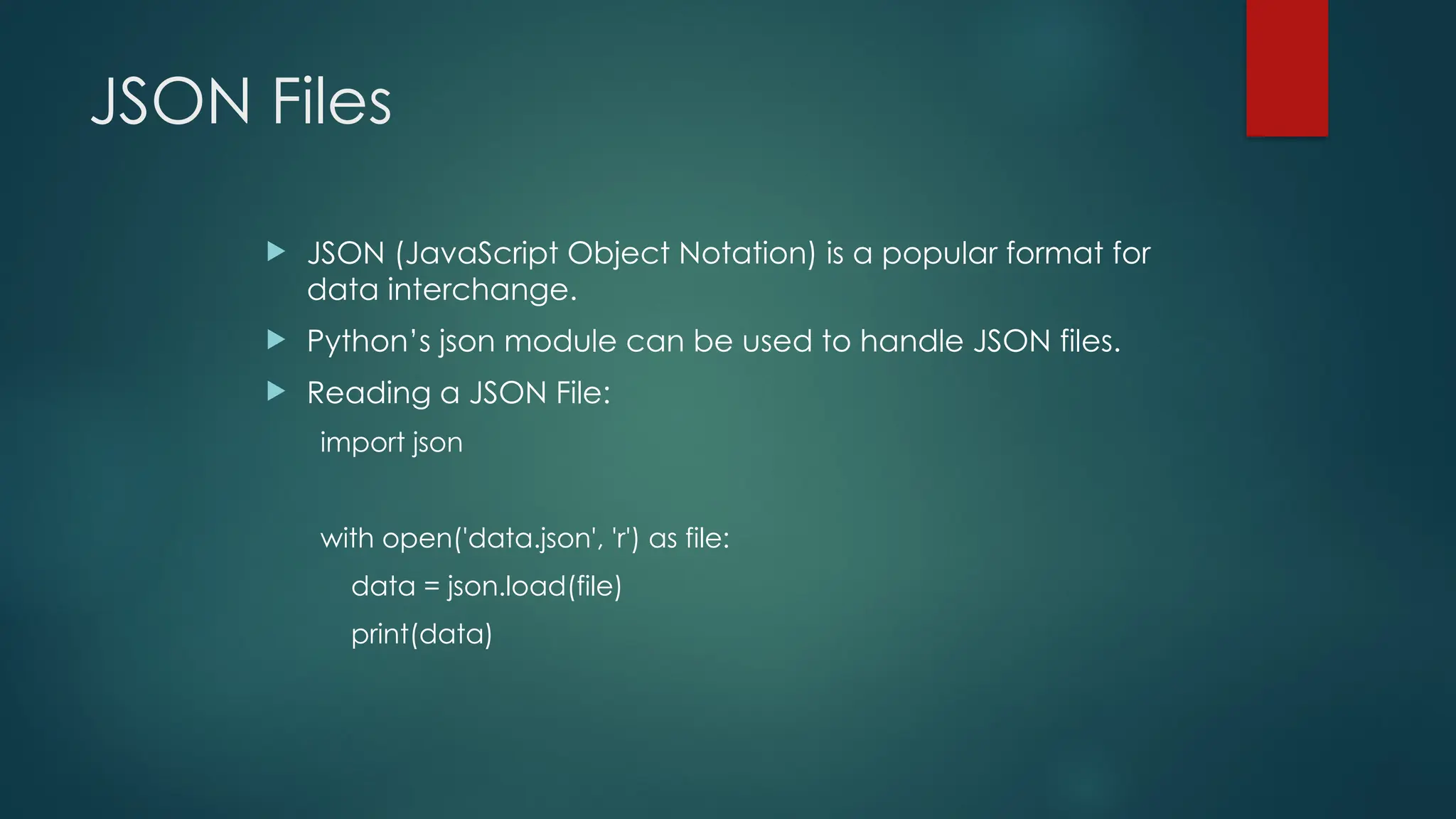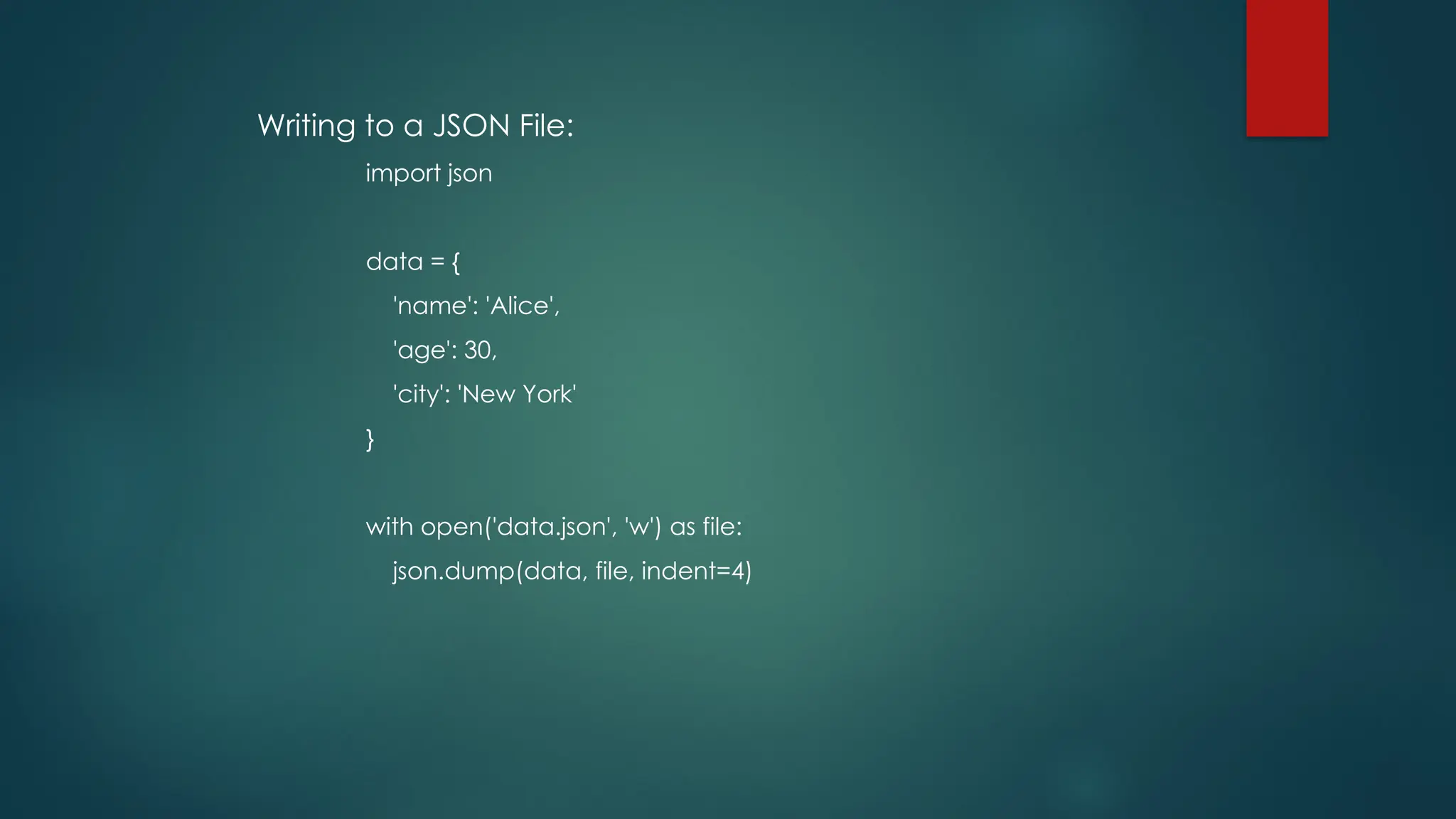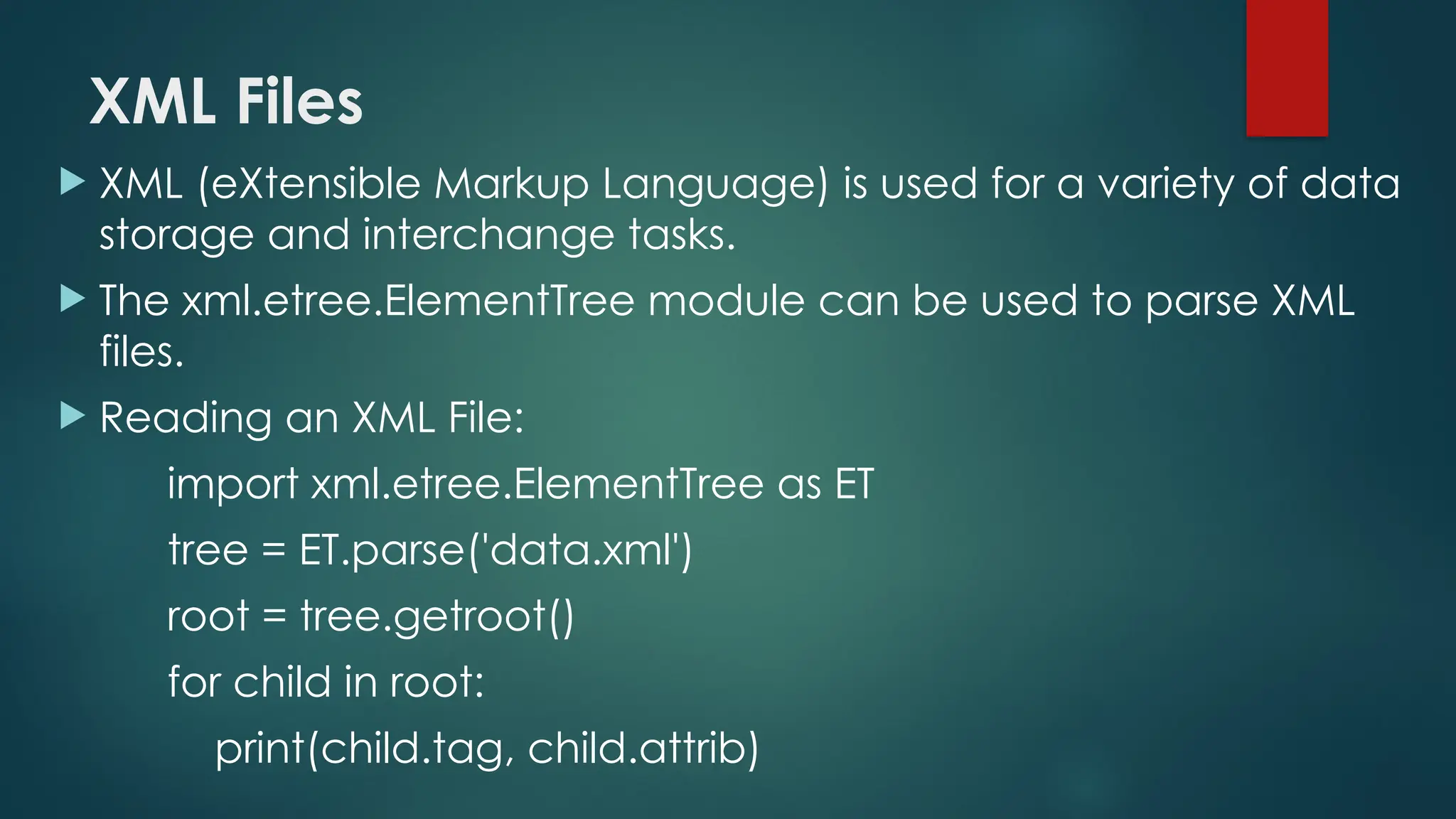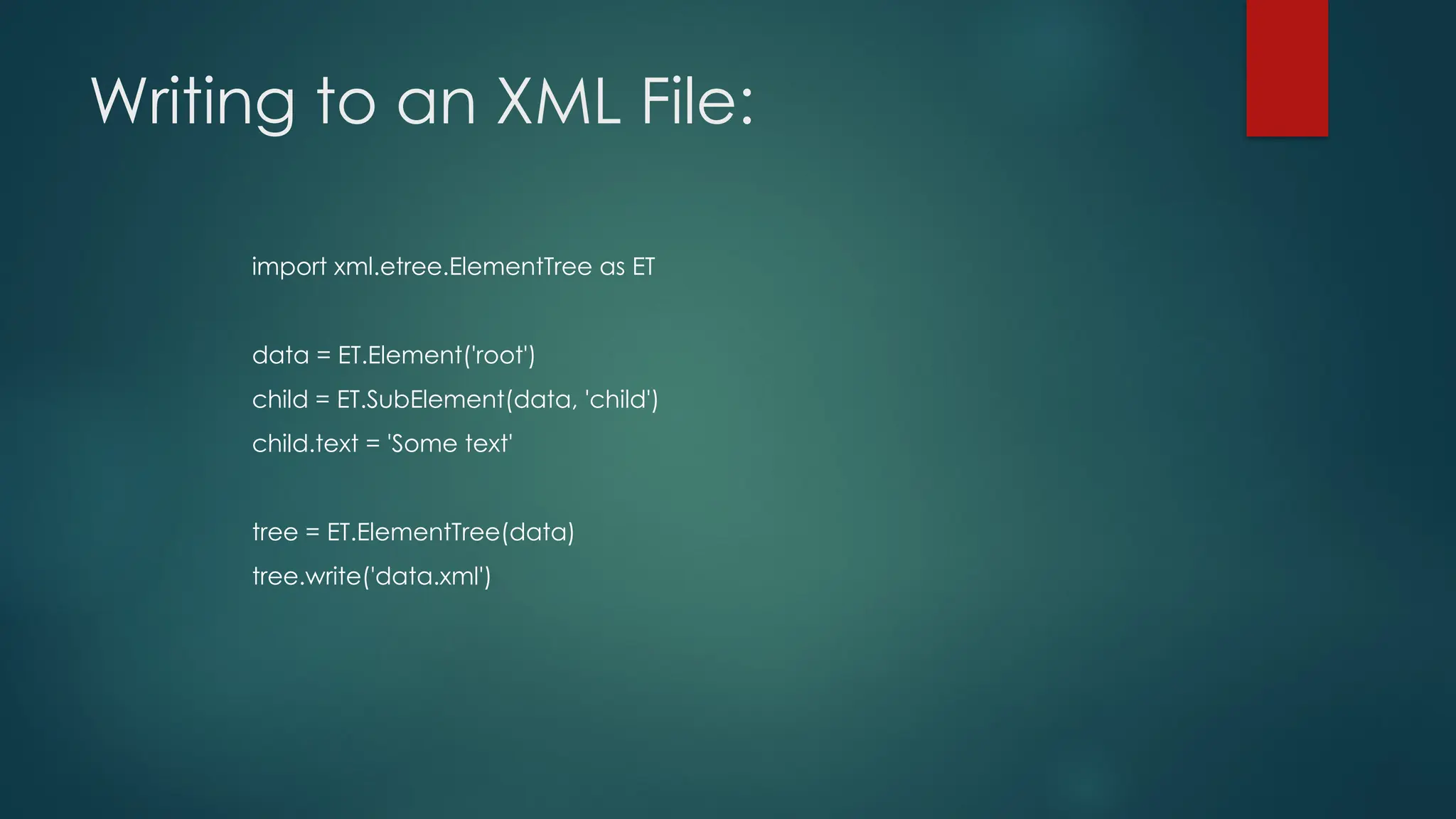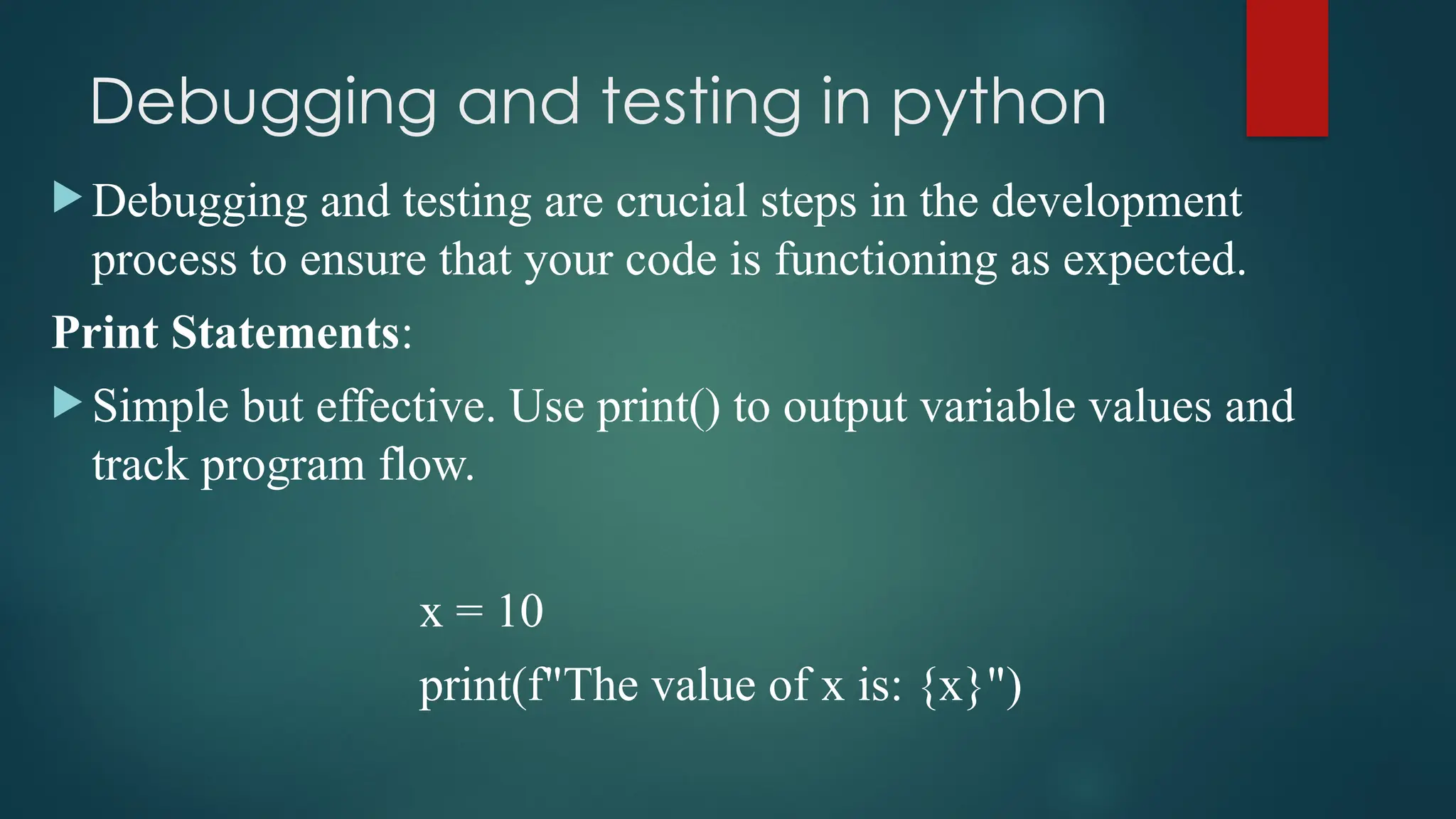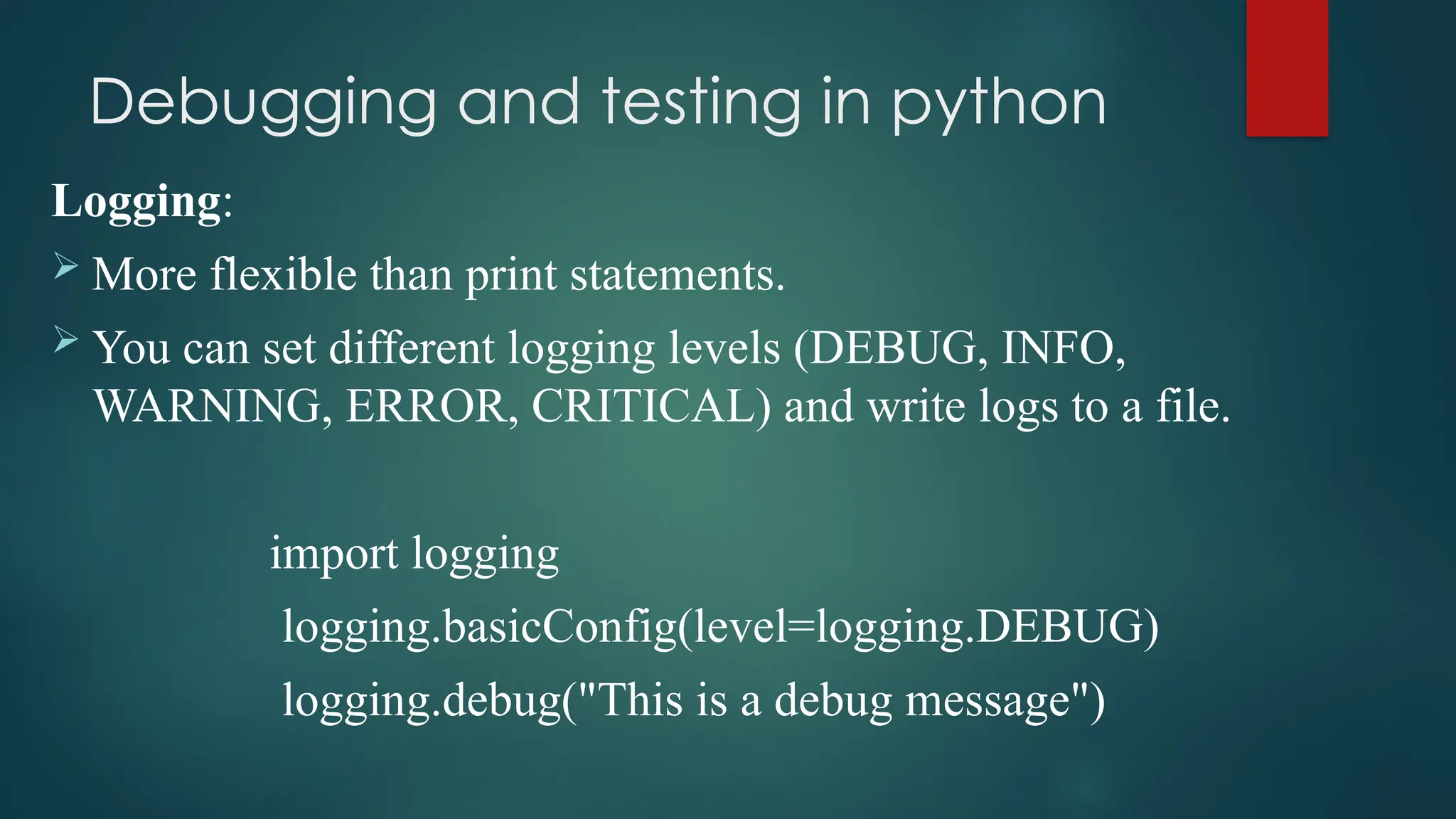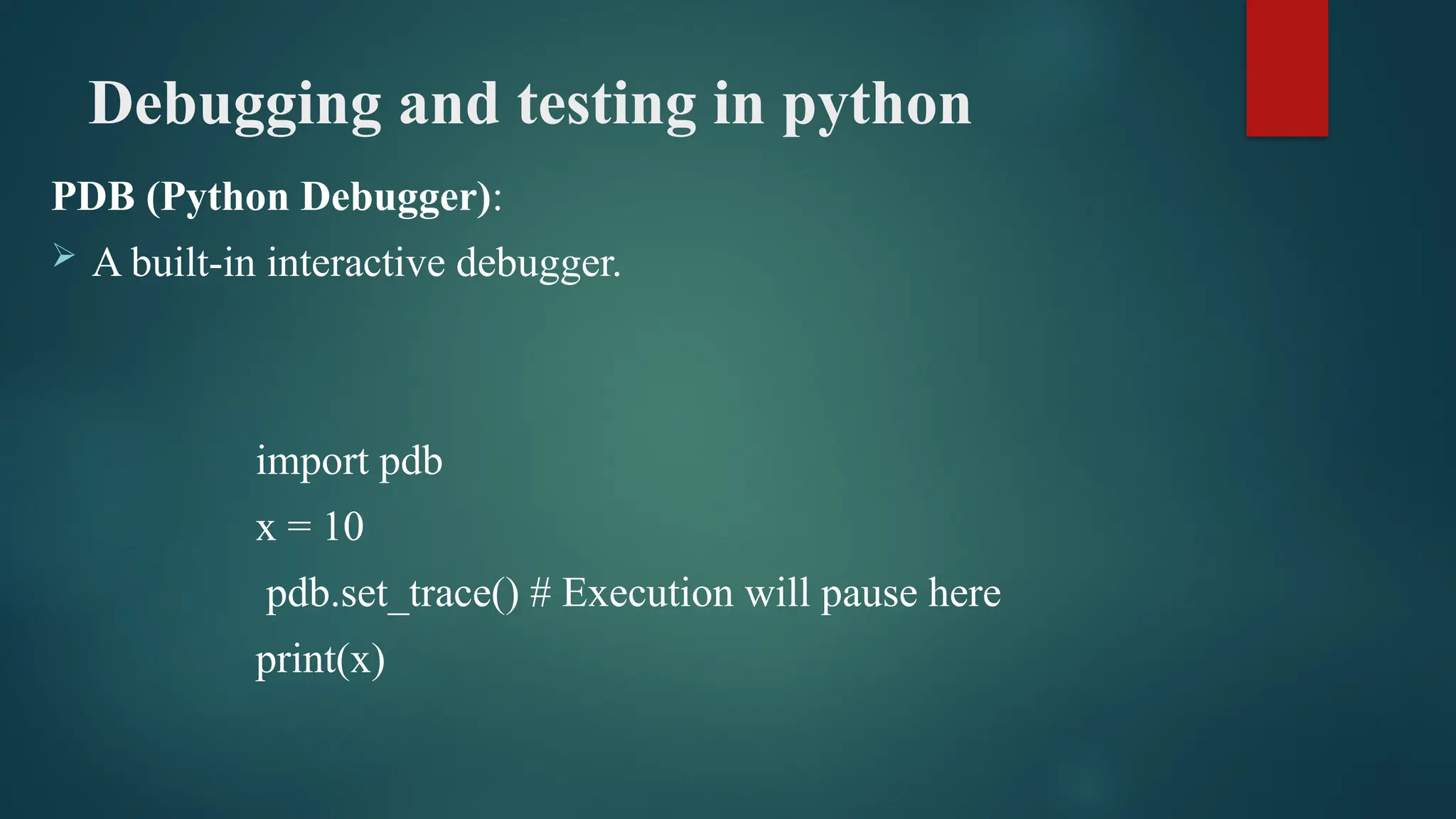Object-oriented programming (OOP) in Python is a programming paradigm that combines data and functions into objects and classes, enabling developers to create scalable and maintainable applications. Key concepts include classes and objects, inheritance, encapsulation, and polymorphism, which support real-world entity modeling. Additionally, the document discusses file handling, command-line arguments, and testing strategies in Python, highlighting the language's versatility and user-friendly features.

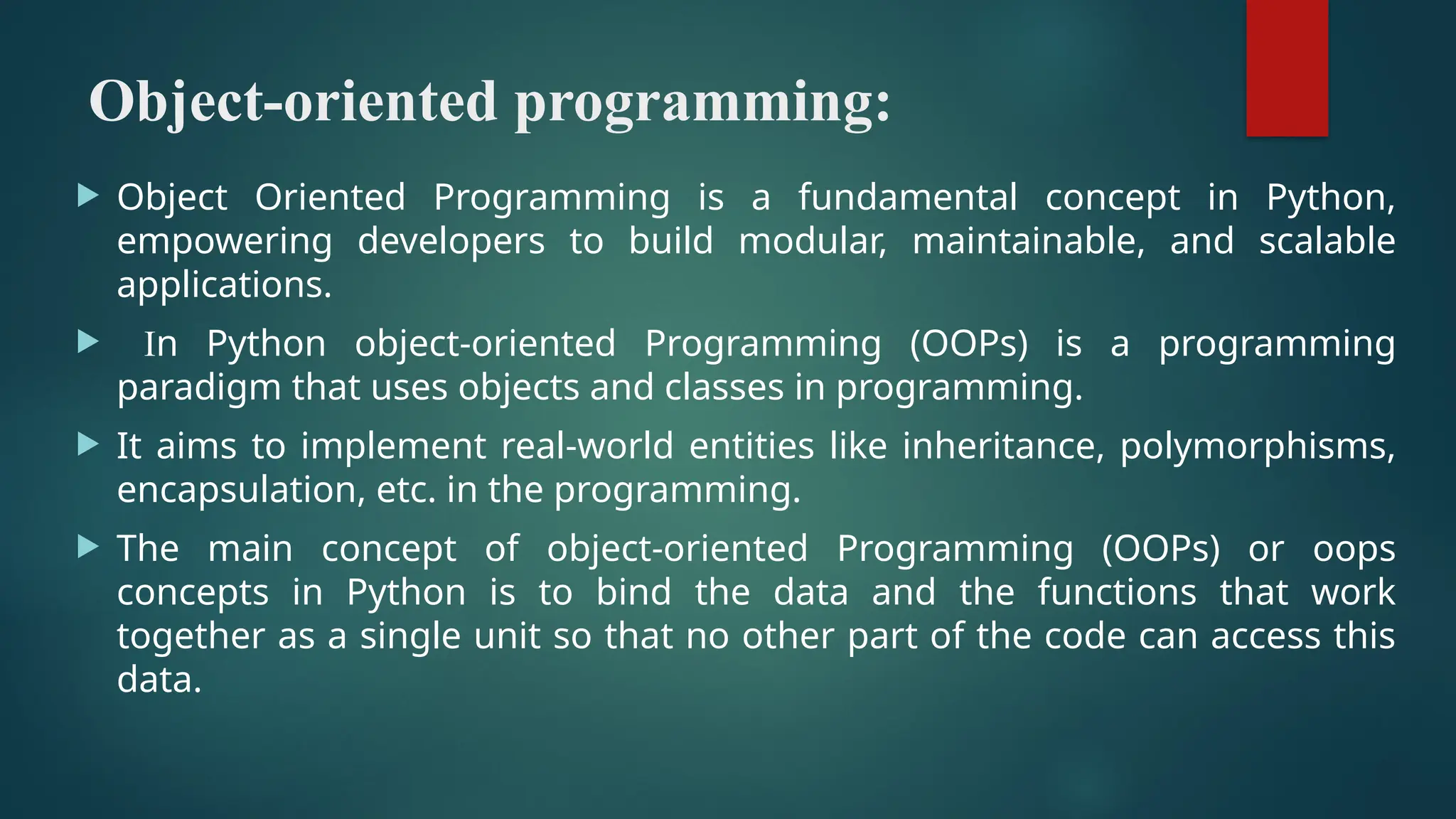

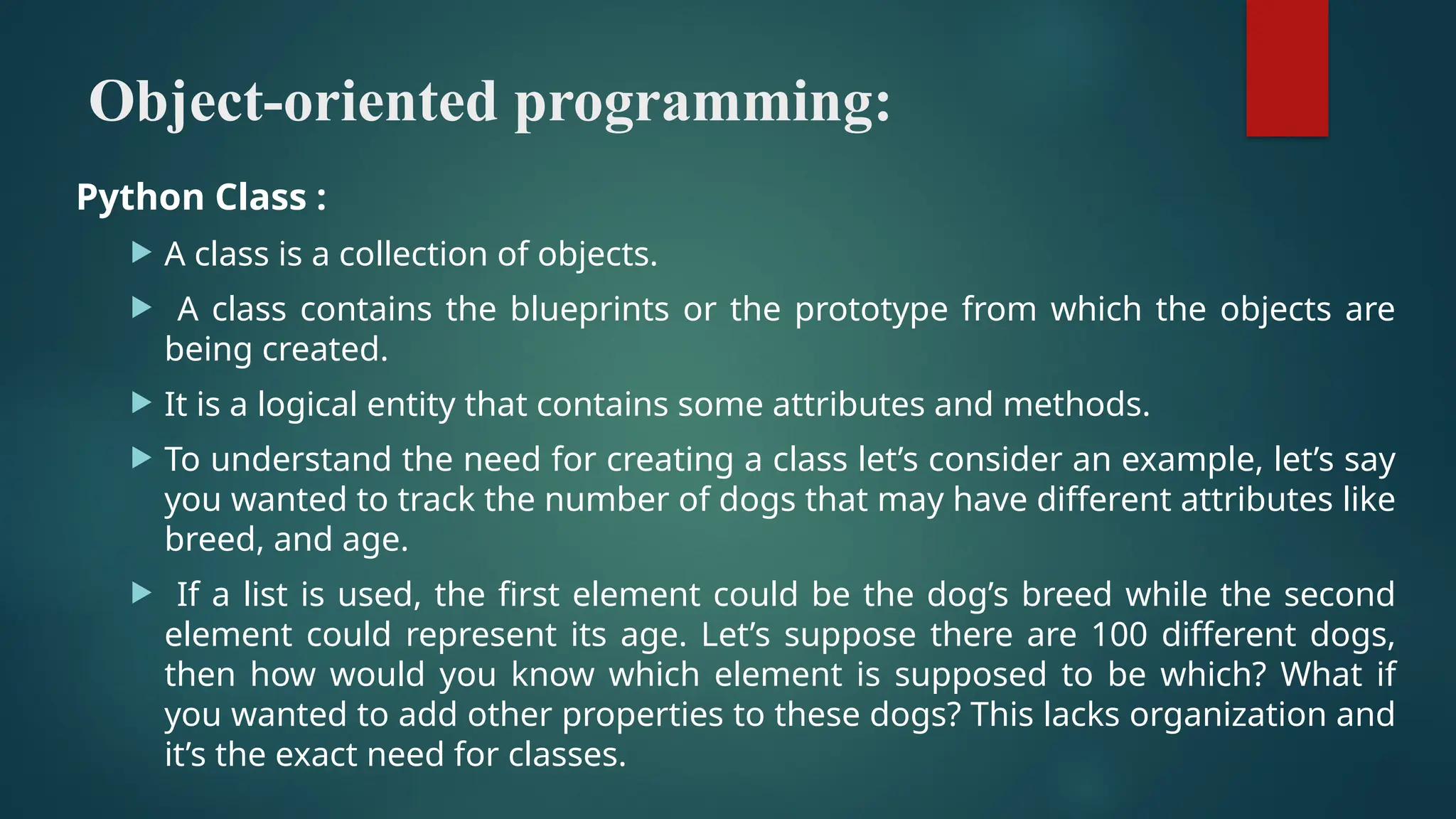
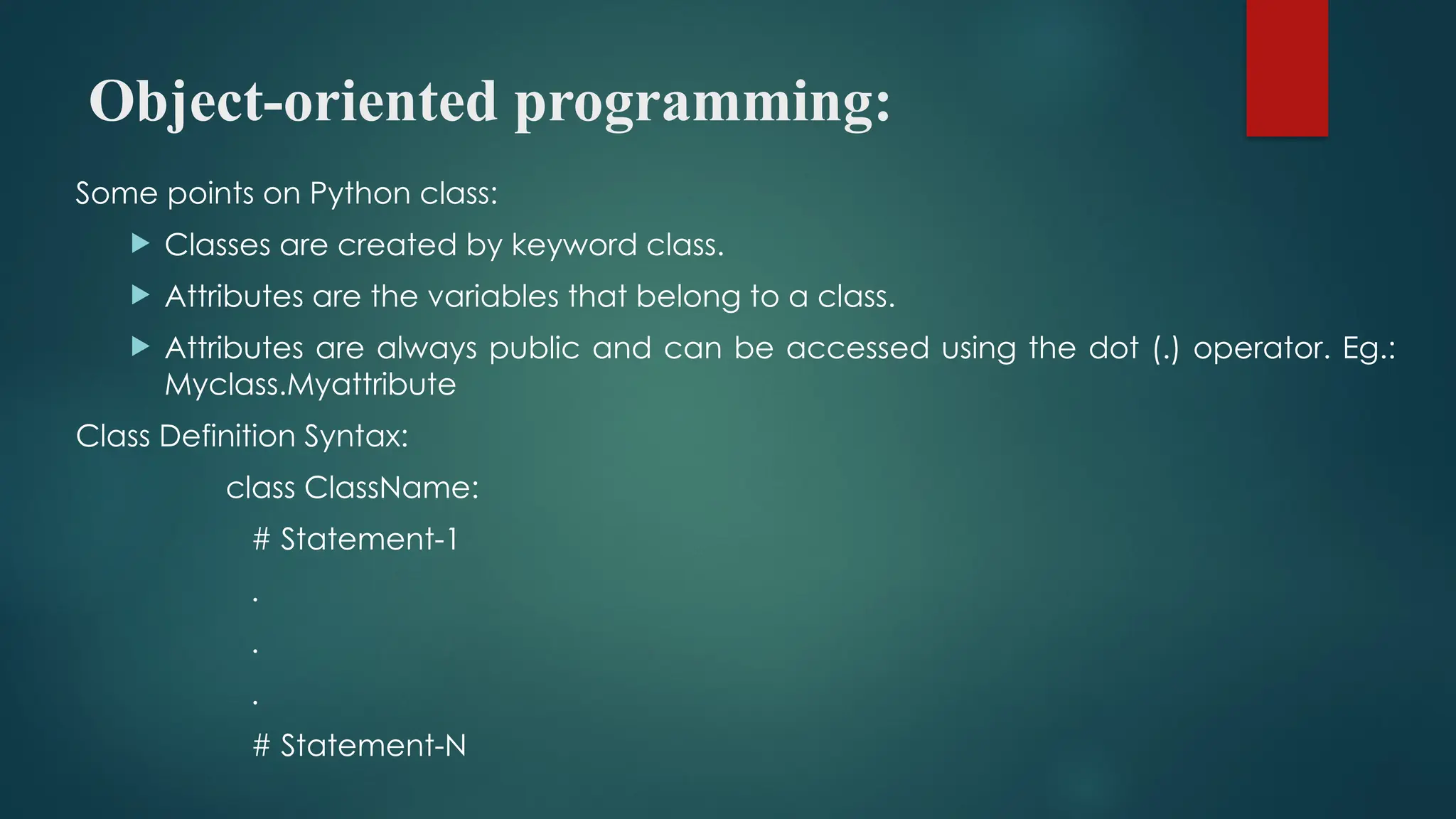
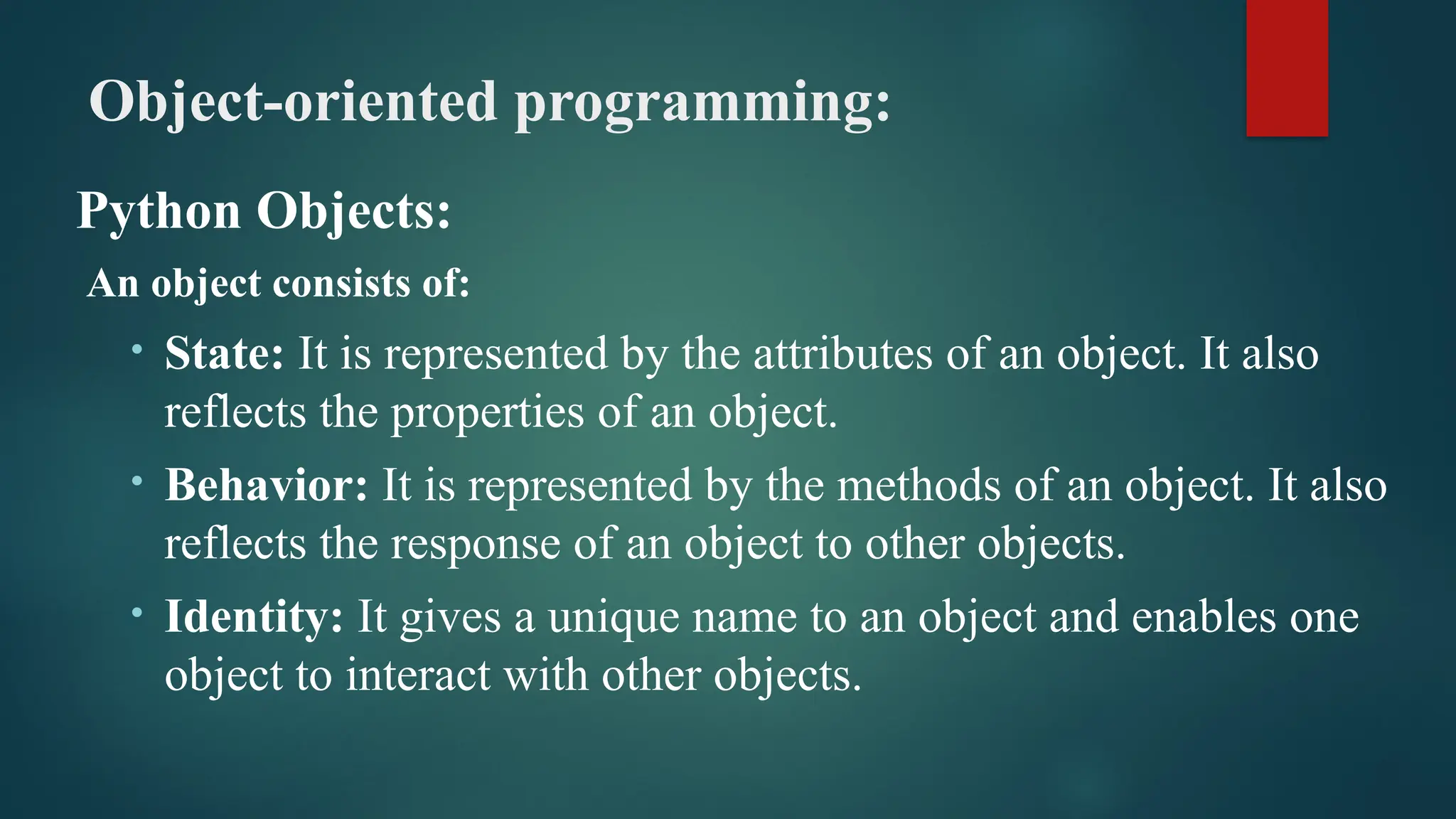
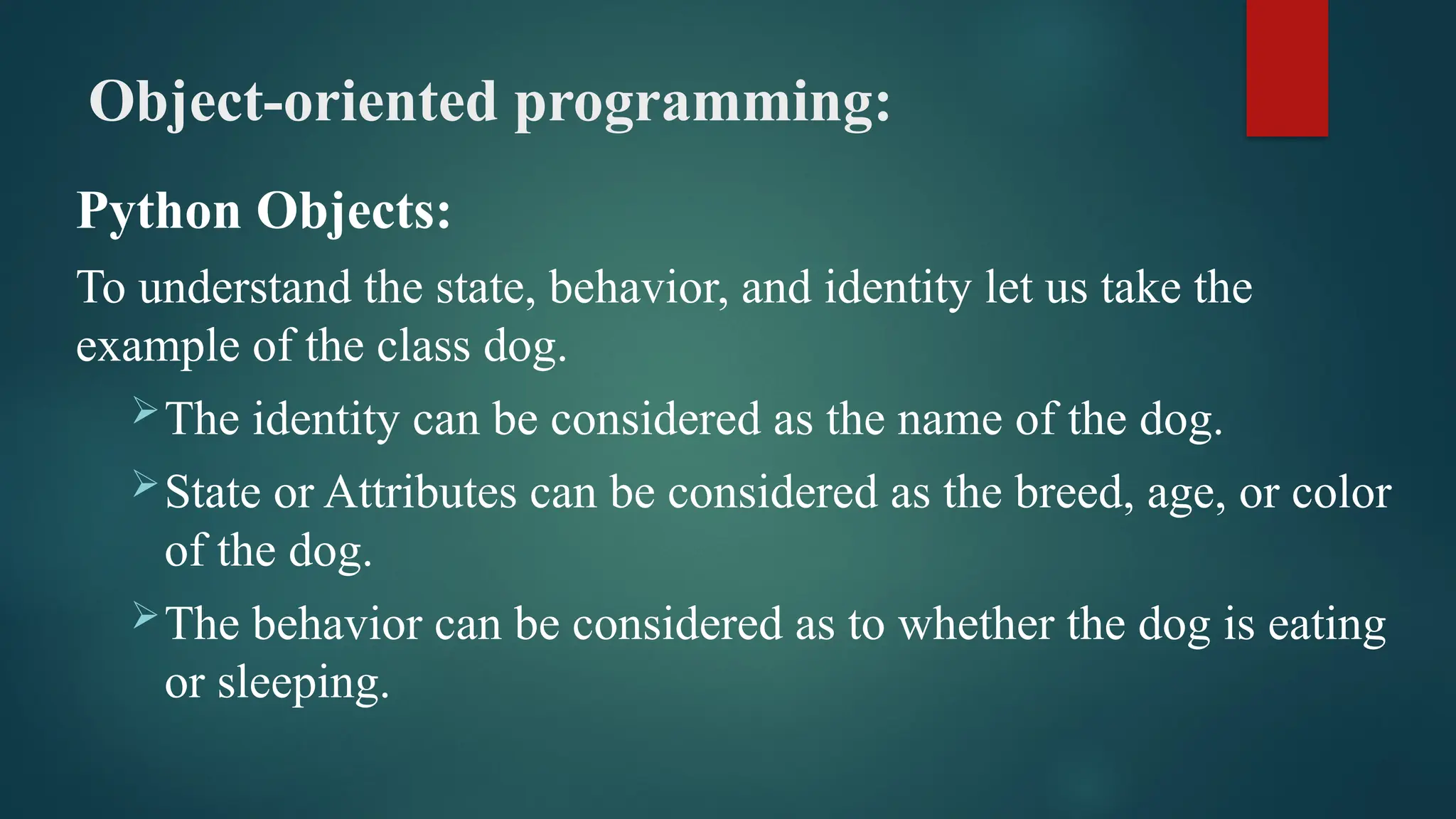
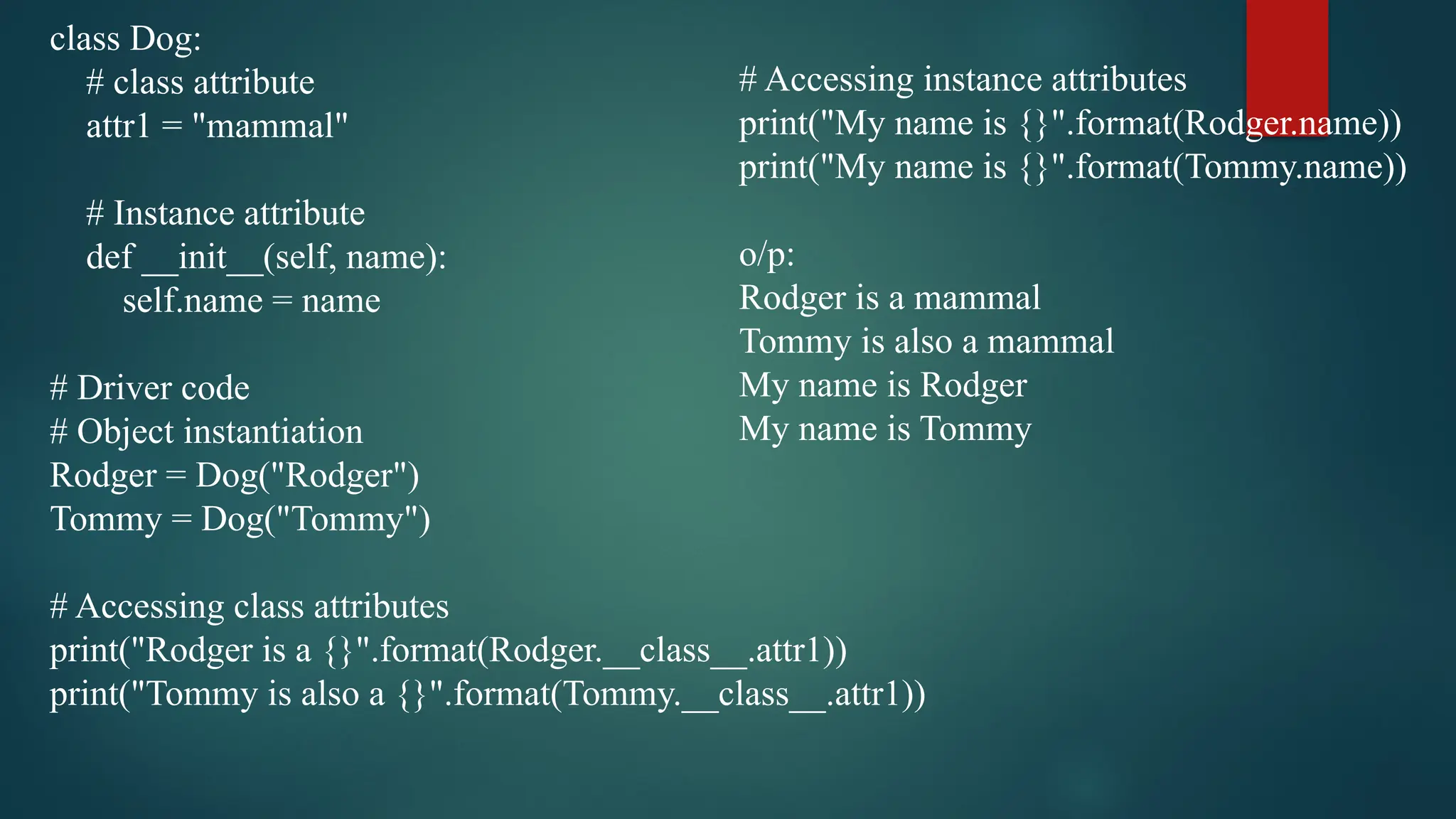
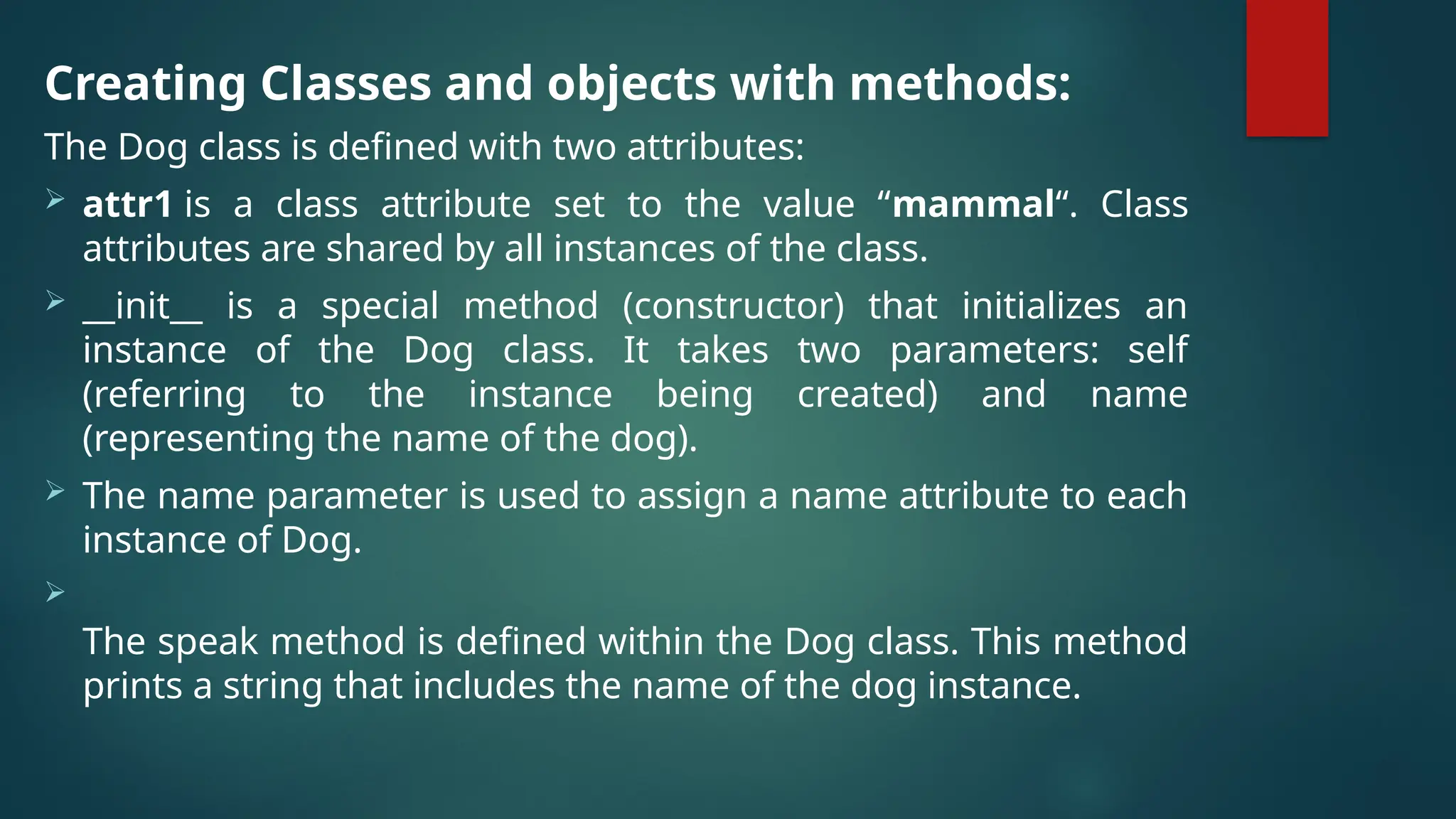

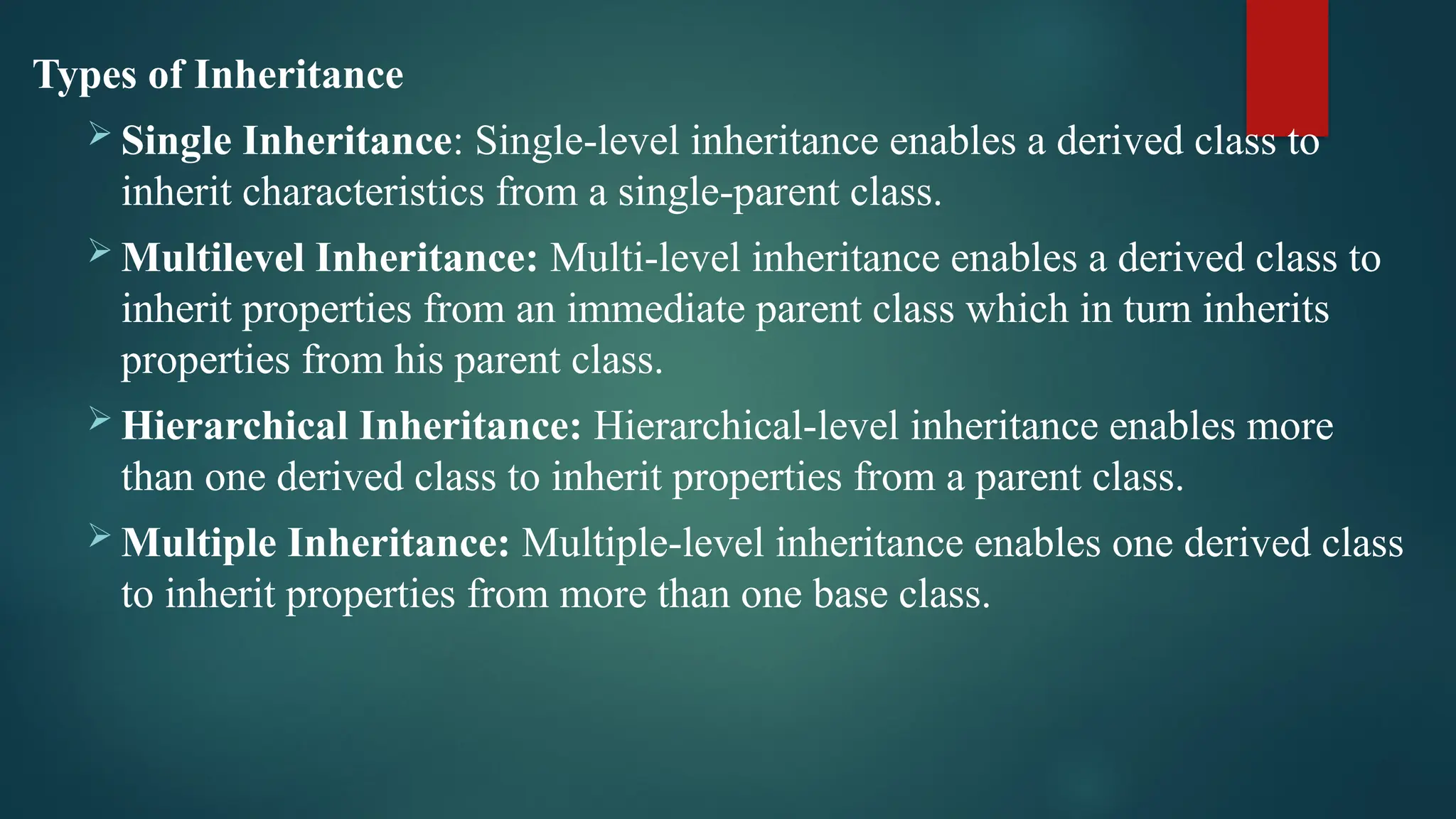
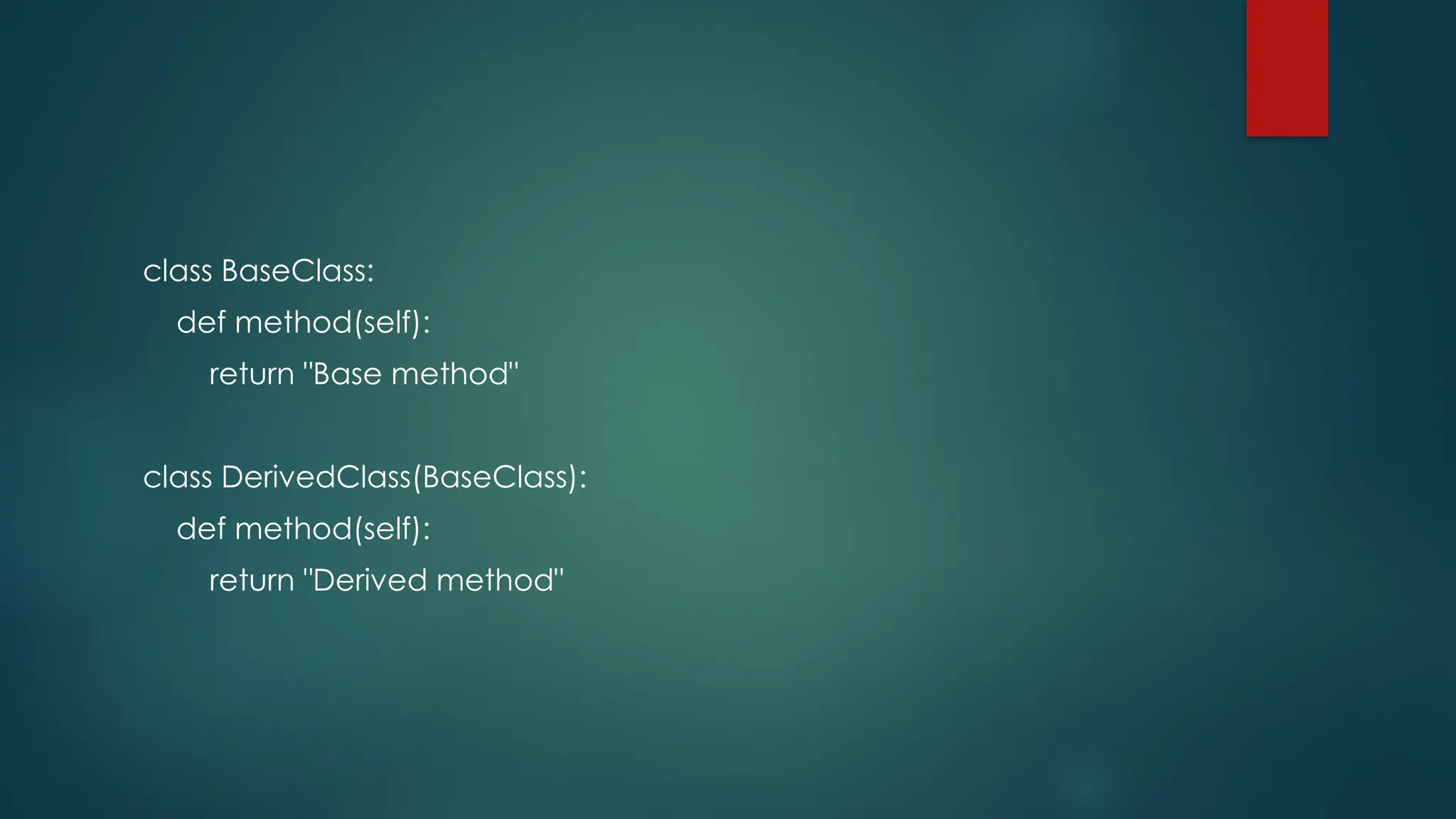
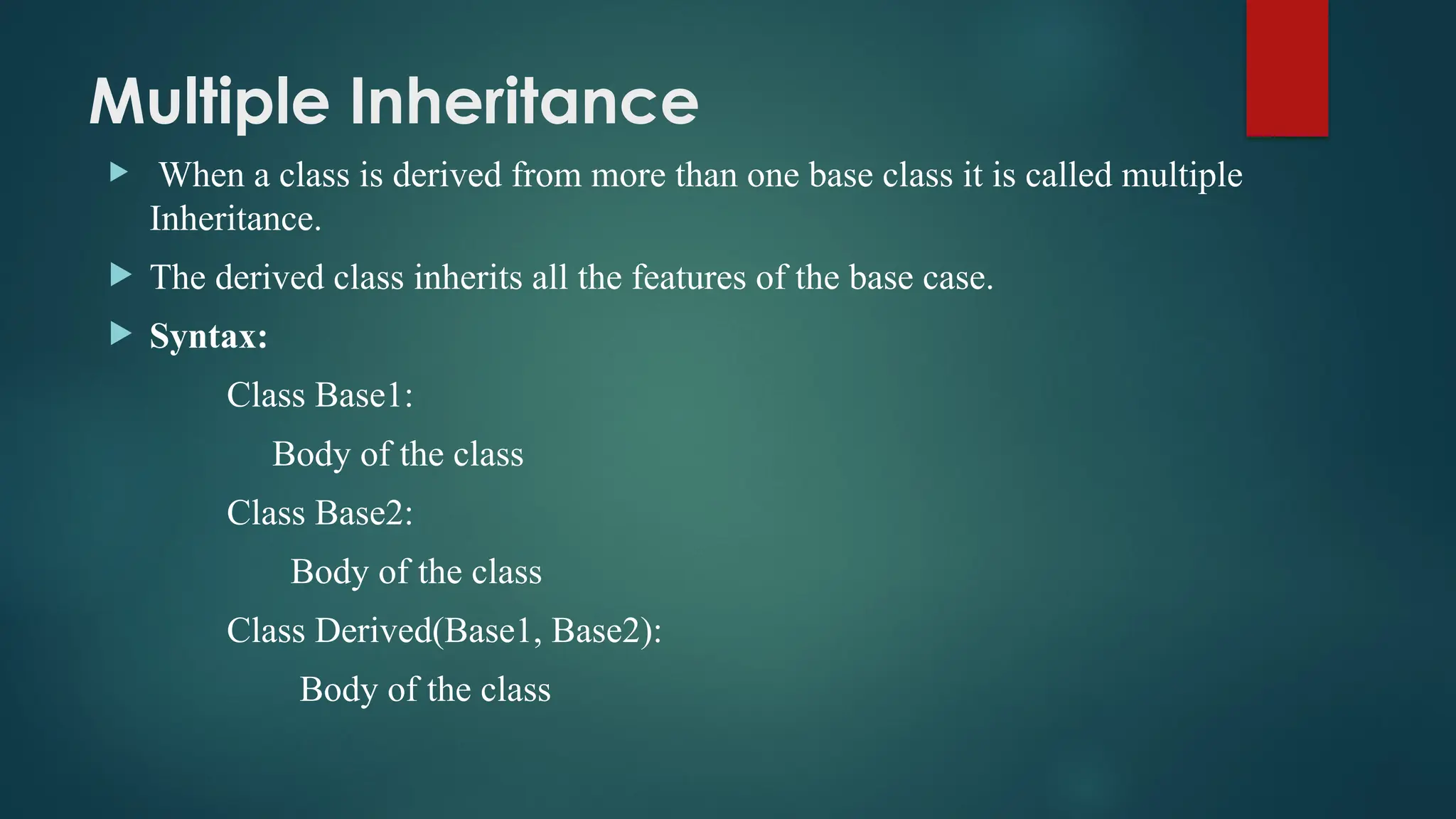
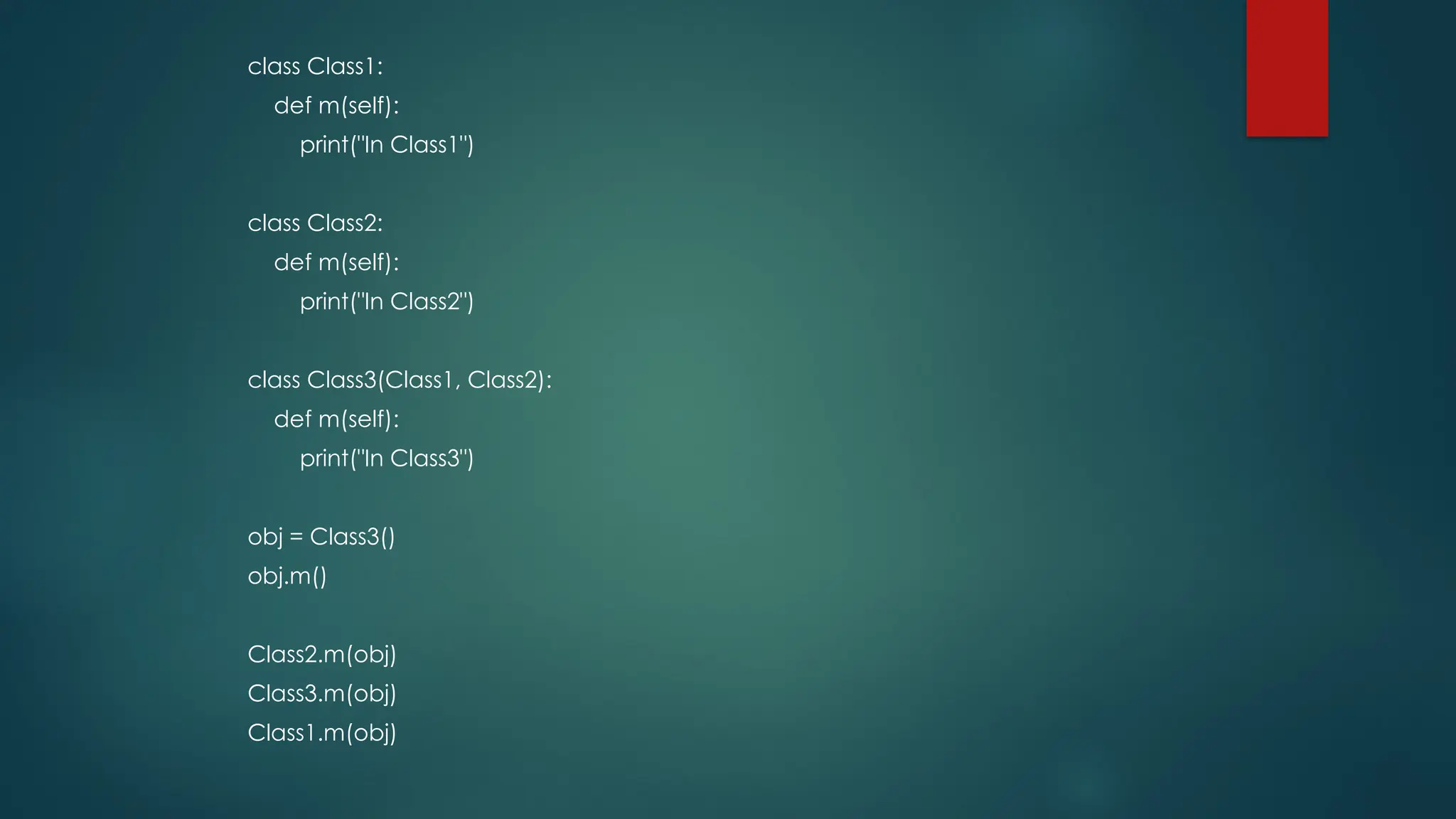
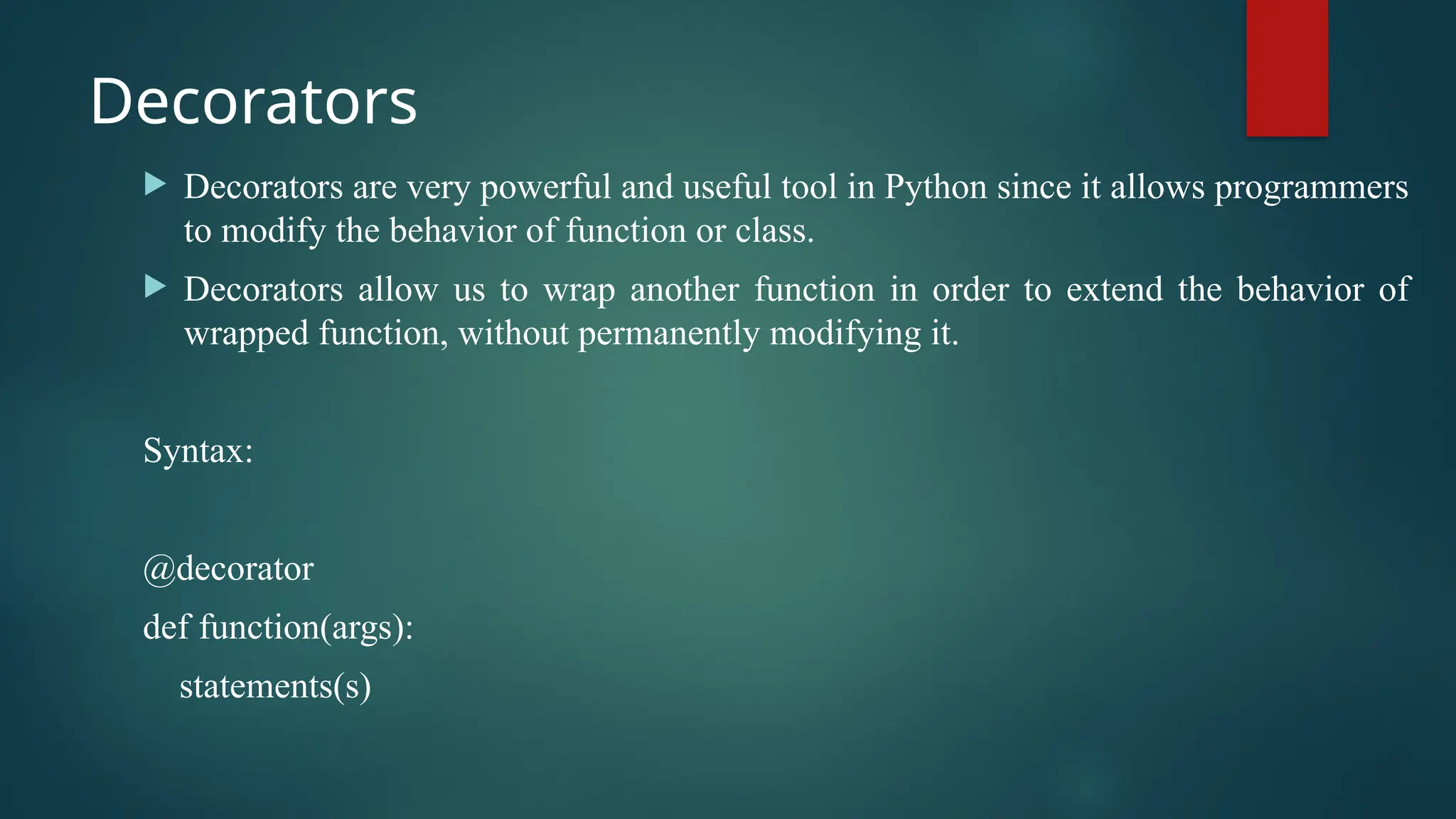
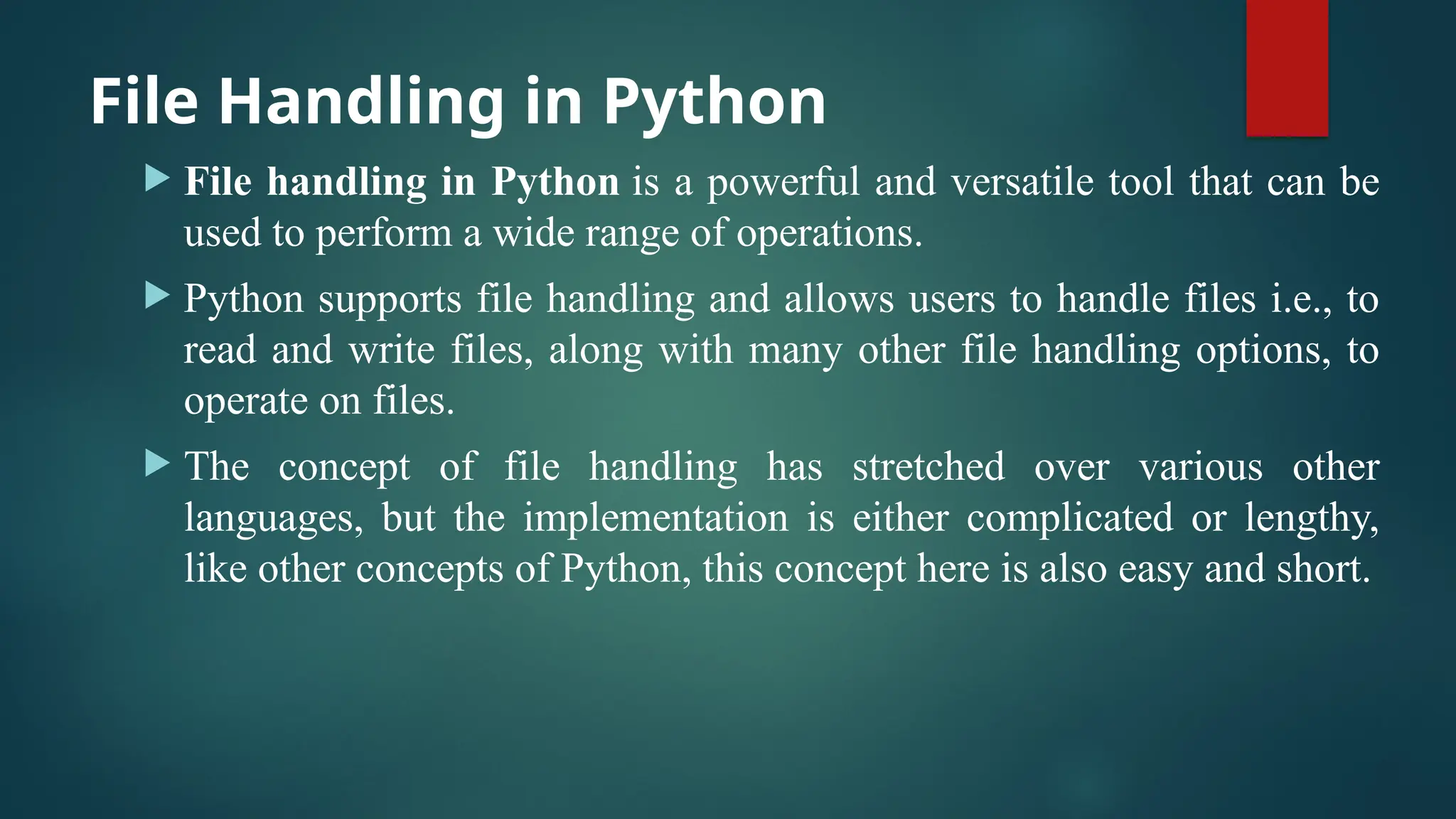
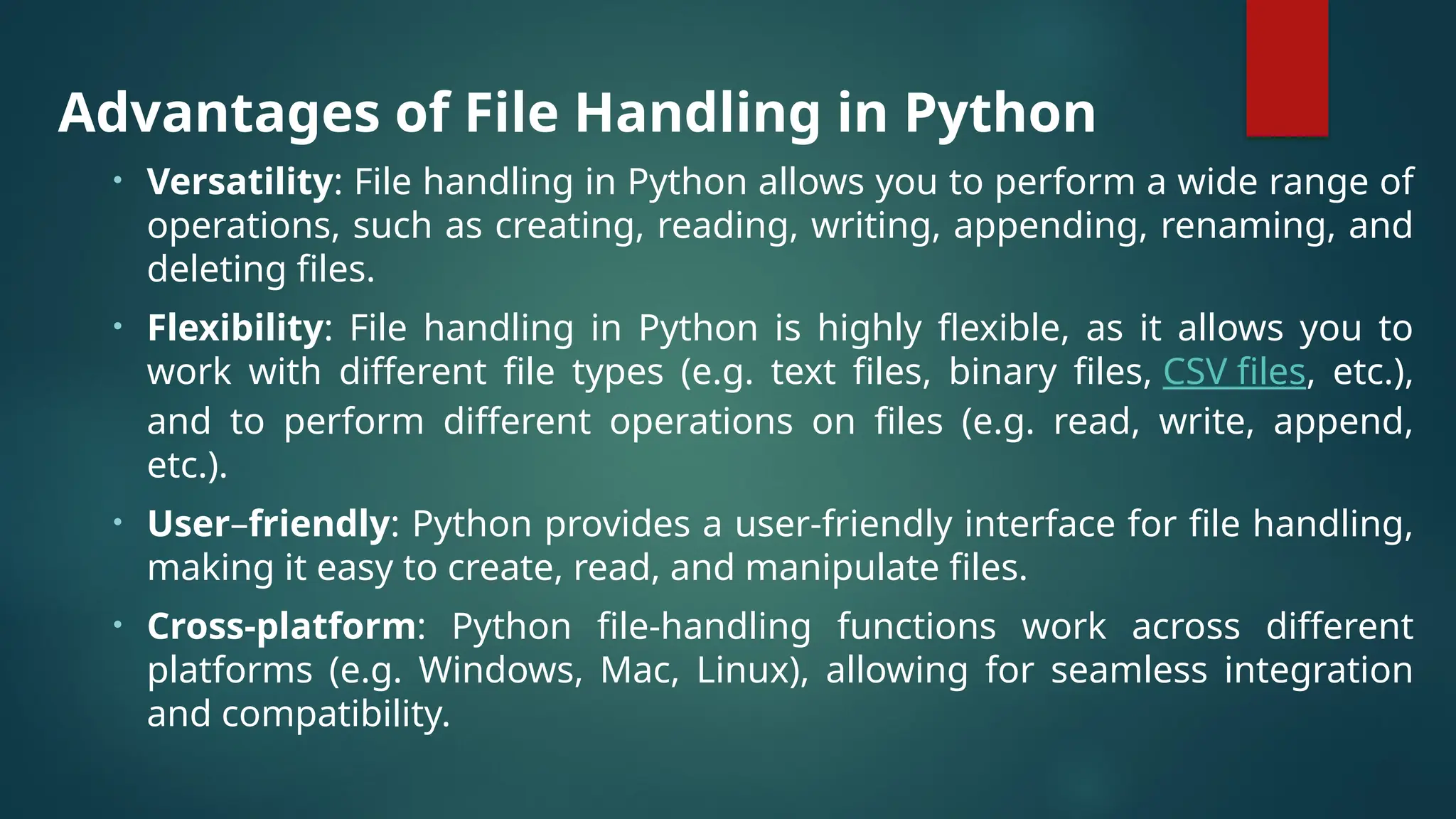
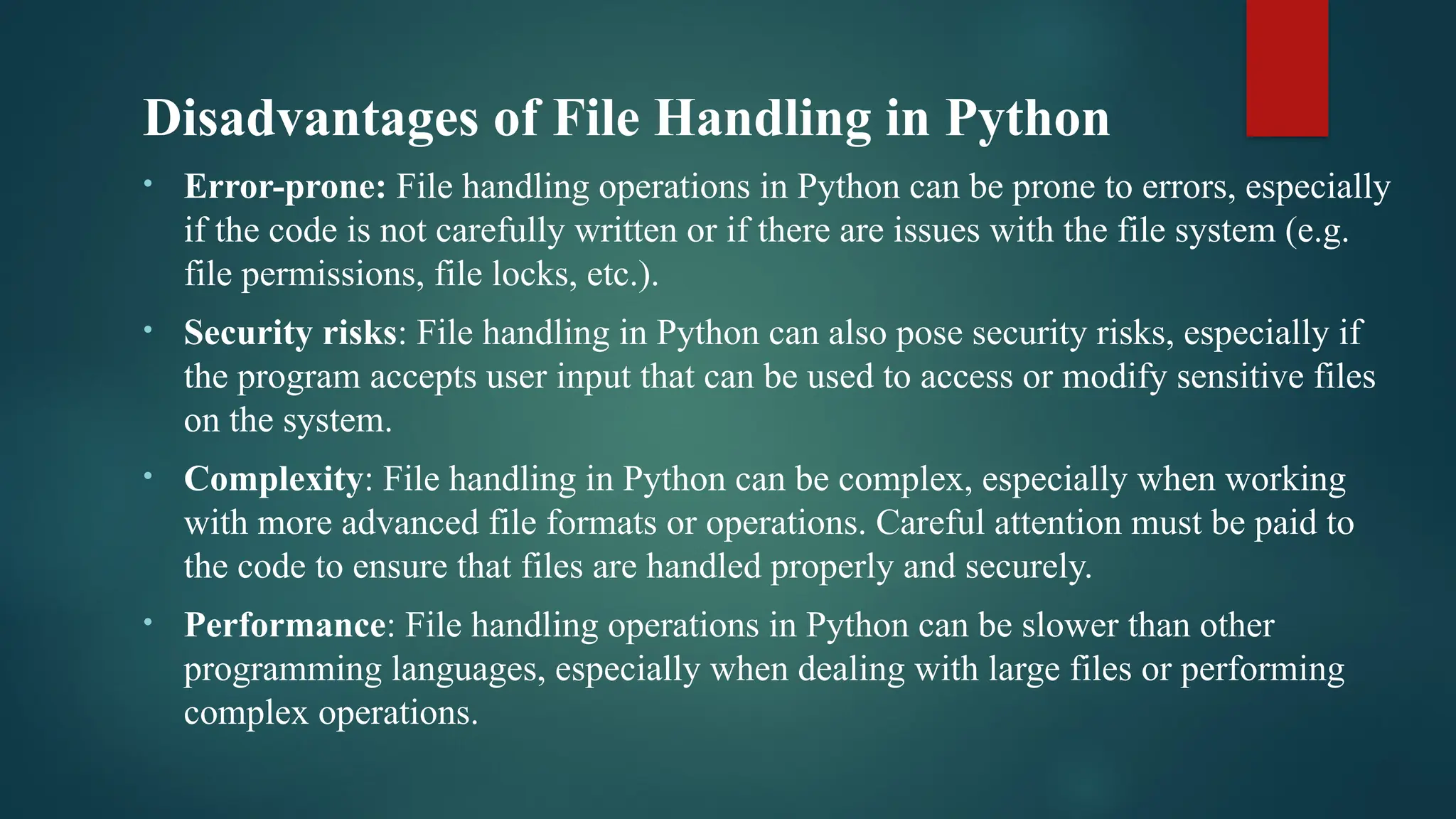
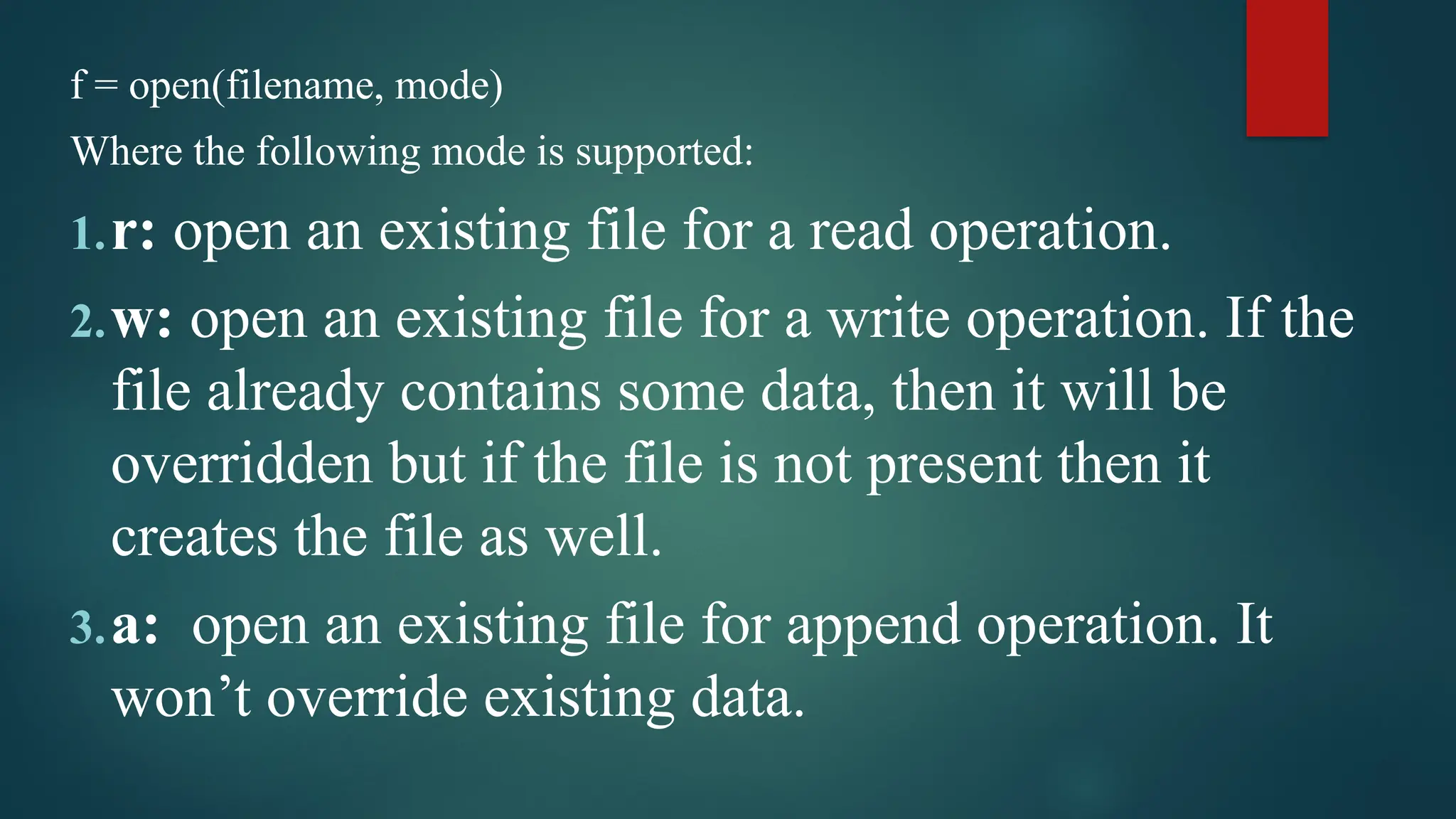

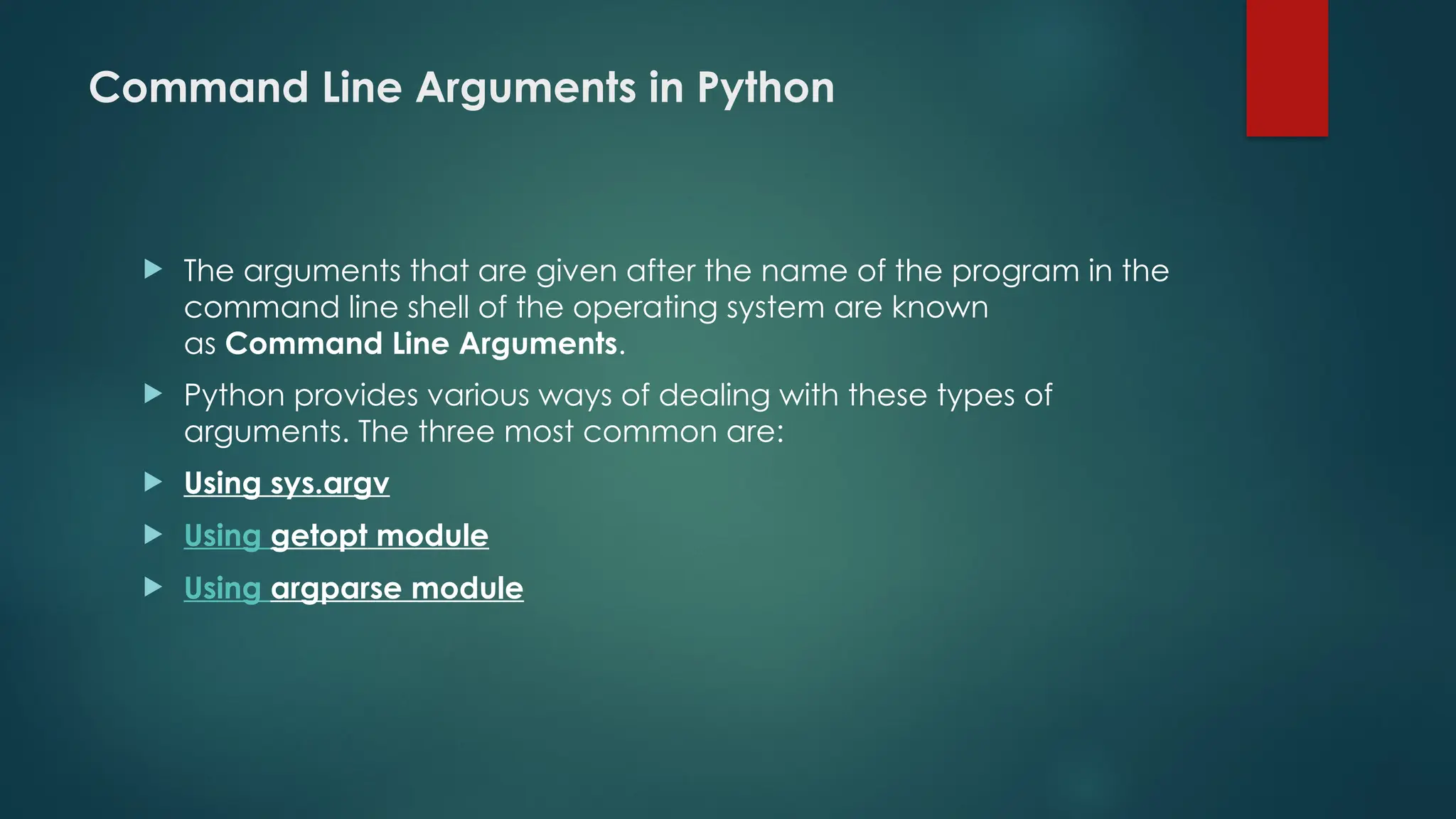
![Using sys.argv The sys module provides functions and variables used to manipulate different parts of the Python runtime environment. This module provides access to some variables used or maintained by the interpreter and to functions that interact strongly with the interpreter. One such variable is sys.argv which is a simple list structure. It’s main purpose are: It is a list of command line arguments. len(sys.argv) provides the number of command line arguments. sys.argv[0] is the name of the current Python script.](https://image.slidesharecdn.com/object-orientedprogramming-240901155212-d5a346a7/75/PYTHON-OBJECT-ORIENTED-PROGRAMMING-pptx-22-2048.jpg)

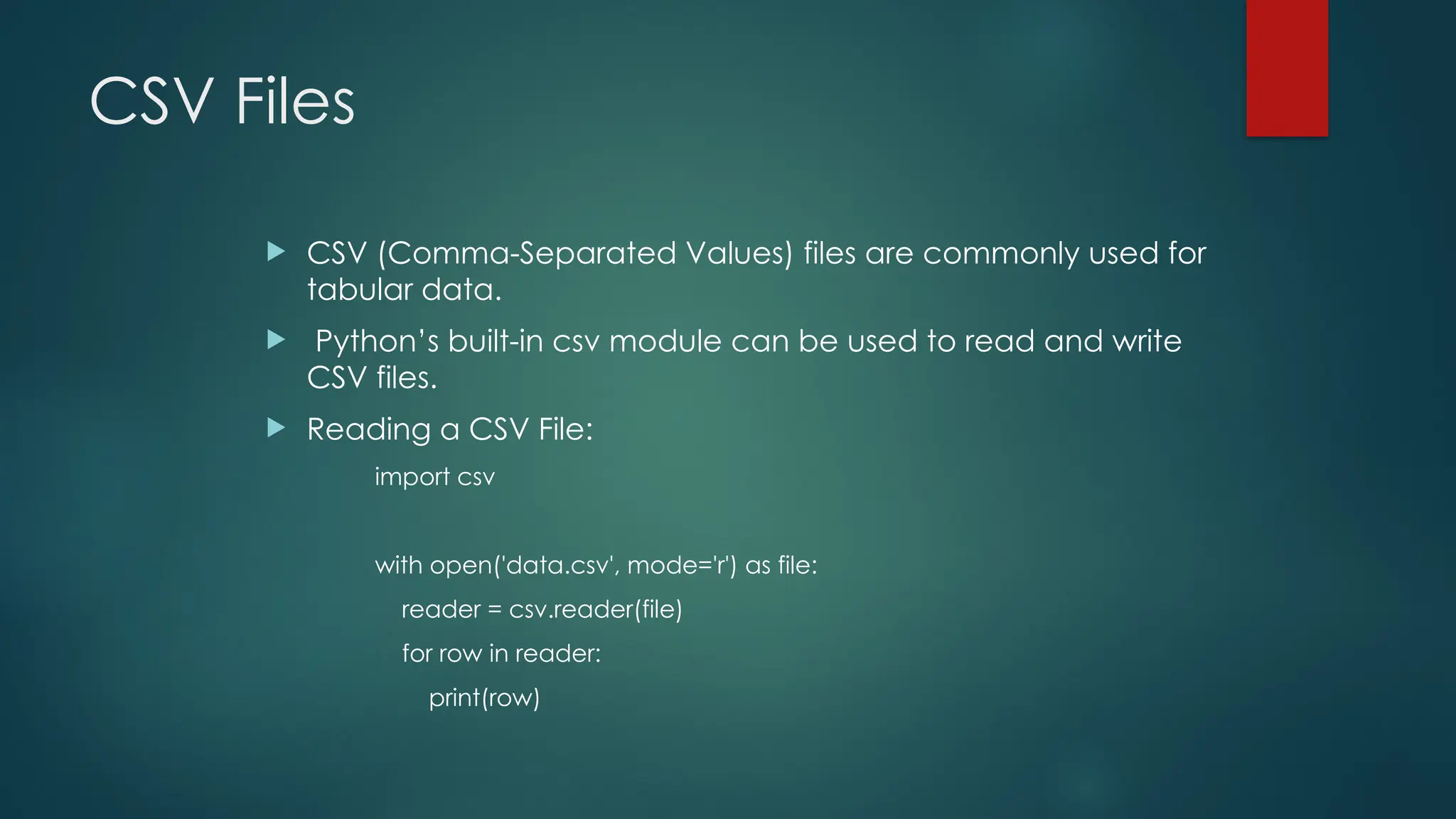
![CSV Files Writing to a CSV File: import csv data = [ ['Name', 'Age', 'City'], ['Alice', 30, 'New York'], ['Bob', 25, 'Los Angeles'] ] with open('data.csv', mode='w', newline='') as file: writer = csv.writer(file) writer.writerows(data)](https://image.slidesharecdn.com/object-orientedprogramming-240901155212-d5a346a7/75/PYTHON-OBJECT-ORIENTED-PROGRAMMING-pptx-25-2048.jpg)
